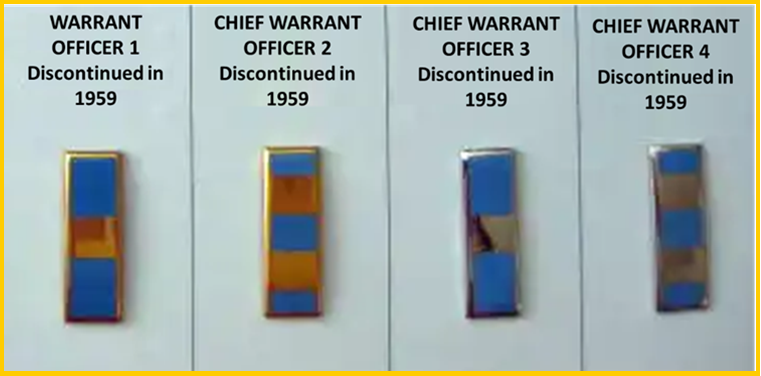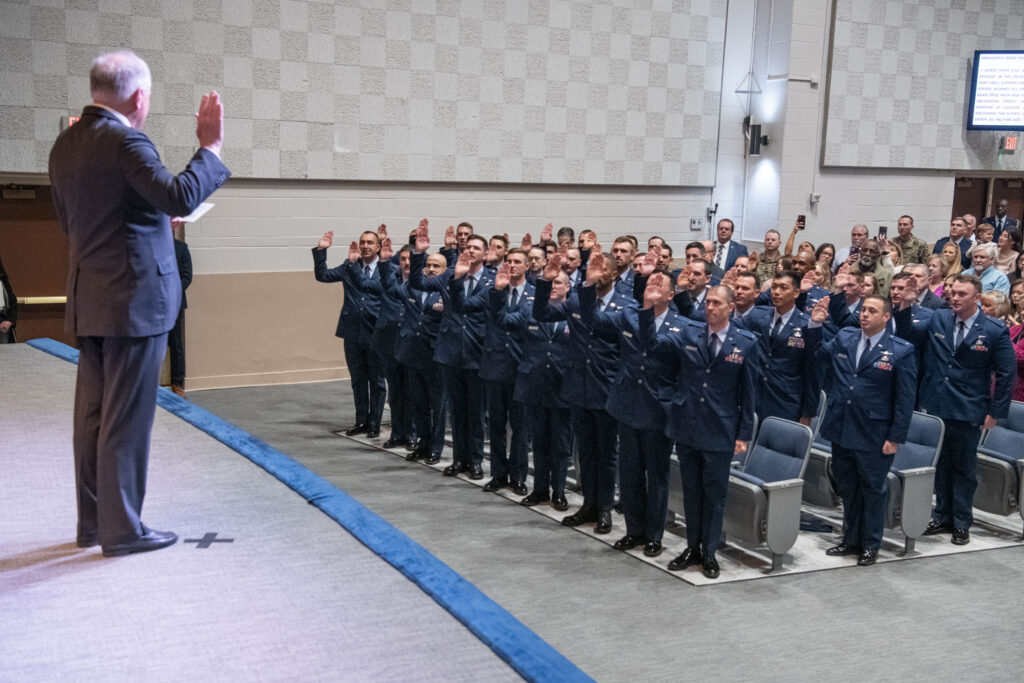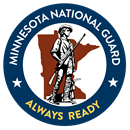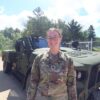Air Force warrant officers return to the Minnesota National Guard cyber ranks
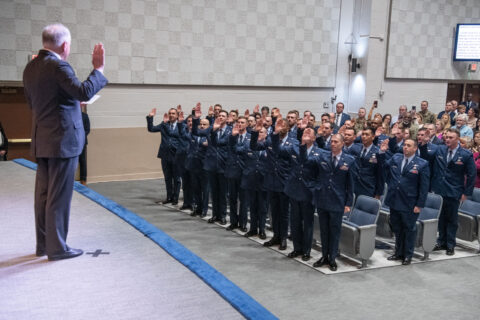
For the first time since 1992, the Minnesota National Guard will have Air Force warrant officers back in the force. Warrant officers serve as technical experts, trainers, and leaders, primarily focusing on one specific, complex specialty. Minnesota’s 133rd Airlift Wing is one of only five National Guard air units selected to receive Air Force warrant officer positions.
“It’s remarkable that we’re bringing warrant officers back into the Air Force after such a huge gap,” said then Secretary of the Air Force Frank Kendall at the first warrant officer graduation ceremony on Friday, December 6, 2024. “It’s time to bring this back.”
Air Force Lt. Col. Brian Henke, commander of Minnesota’s 210th Engineering Installation Squadron of the 133rd Airlift Wing, the unit that will gain the Warrant Officer, shares Kendall’s enthusiasm.
“I’m excited that the Air Force has decided to provide these valuable experts an opportunity to continue their career through a path of technical leadership,” said Henke. “We intend to leverage this new capability in a way that best delivers the evolving cyberspace infrastructure needs of the Air Force.”
The 210th held selection boards in mid-December, with an announcement of the selection expected before the end of January.
According to the National Guard Bureau, the National Guard “will select an additional 71 warrant officers in [the fiscal year 2025], bringing the total to 83 Warrant Officers across 27 States, Territories, and 29 Wings.”
The four other wings selected to receive positions are Texas’ 136th Airlift Wing, Rhode Island’s 143rd Airlift Wing, North Carolina’s 145th Airlift Wing, and Delaware’s 166th Airlift Wing.
The chosen career fields: cyber and IT
“This came right from the Secretary of the Air Force; he wanted Cyber and IT,” said the Wisconsin National Guard’s Army Chief Warrant Officer 4 Bradley Dahl, who serves as an Army Warrant Officer Senior Advisor at the Air Force Warrant Officer Training School. Dahl was previously the commander of a National Guard Warrant Officer Candidate School at Camp Atterbury, Indiana.
The first Air Force warrant officers will reside in one of two career fields, better known as AFSCs, an Air Force Specialty Code. The first AFSC, 17W, will be known as Warfighter Communications & IT Systems Operations. The second AFSC, 17Y, will be known as Cyber Effects & Warfare Operations.
The rationale for these two particular AFSCs was explained by Air Force Chief of Staff Gen. David W. Allvin at the Air Force Association’s February 2024 Warfare Symposium.
“There’s something specific about this career field, why it’s attractive, and it’s a nice match for a warrant officer program,” said Allvin. “The pace of change of the cyber world, the coding world, the software world — it is so rapidly advancing, we need those Airmen to be on the cutting edge and stay on the cutting edge.”
Allvin added that retention is also a motivator, “Developing that warrant officer track for this narrow career field, we anticipate it will drive that talent in and help us to keep that talent.”
“When it comes to cyber and IT, there are more jobs on the civilian side,” said the Minnesota National Guard’s Army Chief Warrant Officer 4 Jeremiah Miller, an Army Warrant Officer Senior Advisor at the school. Miller added, “We’re losing top talent.”
The urgency to reestablish the warrant officer rank was evident. Within a year of announcing the decision to resurrect the Air Force warrant officer corps, Air Force leaders cut the ribbon and opened the doors at the newly established Warrant Officer Training School, known as WOTS. Two weeks later, the first warrant officer candidates began their training.
A path of technical leadership
The plan is for the new warrant officers to focus more on the technical aspects of their jobs apart from the enlisted ranks. Such a singular focus will allow the new warrant officers to maintain their specialized skills, knowledge, and expertise.
“The Air Force has decided to provide these valuable experts an opportunity to continue their career through a path of technical leadership,” said Henke. “This new warrant officer will be responsible for shaping and delivering a vison on the technology and training.”
The Air Force had warrant officers in its early days in the late 1940s and ’50s. However, within a decade, the Air Force phased out the warrant officer ranks in favor of the senior noncommissioned officer ranks, adopting the duties and responsibilities of the warrant officers.
Once an Airman attains a senior noncommissioned officer rank, “they’re more focused on the leadership side of things, and sometimes that can lead to a loss of some technical skills and proficiencies,” said Miller. “The Warrant Officers will be focused on one thing. It’s going to be great; everyone here [at the school] is excited about the concept – it will also be a culture change and maybe a little culture shock.”
At Minnesota’s 210th Engineering Installation Squadron
How the new Warrant Officers will operate and their specific duties are still being developed.
“We are still working with the broader engineering installation community to shape the role,” said Henke. Regardless, the new warrant officers are a new tool in the 210th’s arsenal, which he fully intends to employ.
“We intend to leverage this new capability in a way that best delivers the evolving cyberspace infrastructure needs of the Air Force,” Henke said.
Warrant Officer Training School
The first course began in early October 2024 and included 30 warrant officer candidates. The first new group graduated on December 7, 2024.
During 40 days of training and education, candidates learn how to serve Air Force Leaders as technical advisors.
Of the most recent class of 30 candidates, one-fifth were National Guard Airmen. Two were from the Air Force Reserves, and the remaining 22 Airmen were from the active-duty Air Force.
“The class ranged in rank from staff sergeant to chief master sergeant,” said Miller.
“The warrant officers we develop here will step right in and join their joint partners on combatant commanders’ teams and give us the tactical, operational, and strategic advantages that our force needs, anytime and anywhere,” said Air Force Lt. Gen. Andrea D. Tullos, commander and president of Air University, in a September article.
The following 30 Airmen selected as candidates will begin their training in January 2025.
The optimism is high for the new Air Force’s new technical leaders, the Warrant Officer.
“The Air Force’s newest warrant officers are ready to make an impact as technical leaders in the force,” said Air Force Maj. Nathaniel Roesler, the school’s commandant.
“The 210th is excited to be part of the revitalization on the leading edge of the warrant officer ranks,” said Henke. “We are excited to bring this new capability to the State of Minnesota, the 133rd Airlift Wing, and the 210th.”
By Maj. Nathan Wallin
Minnesota National Guard
Public Affairs
